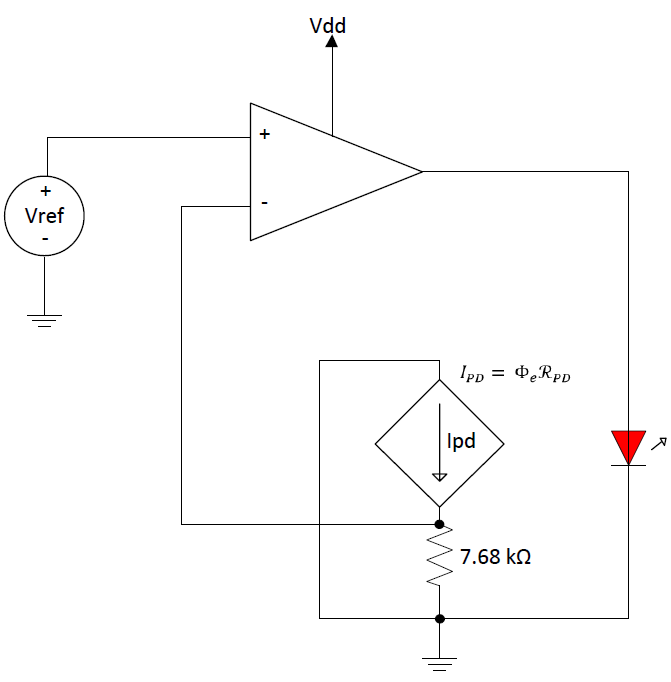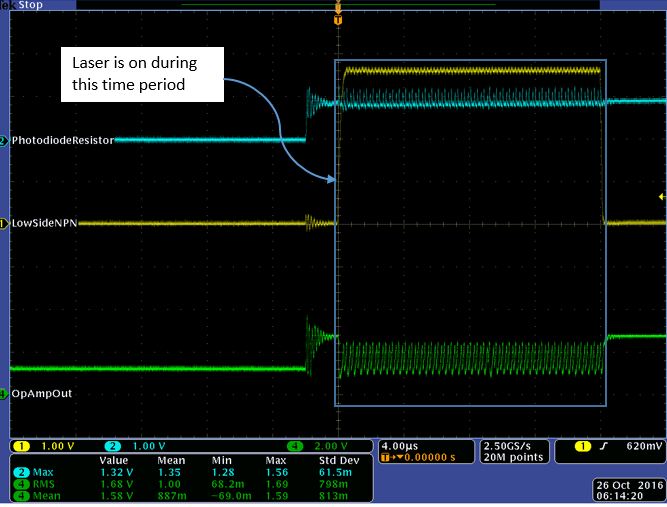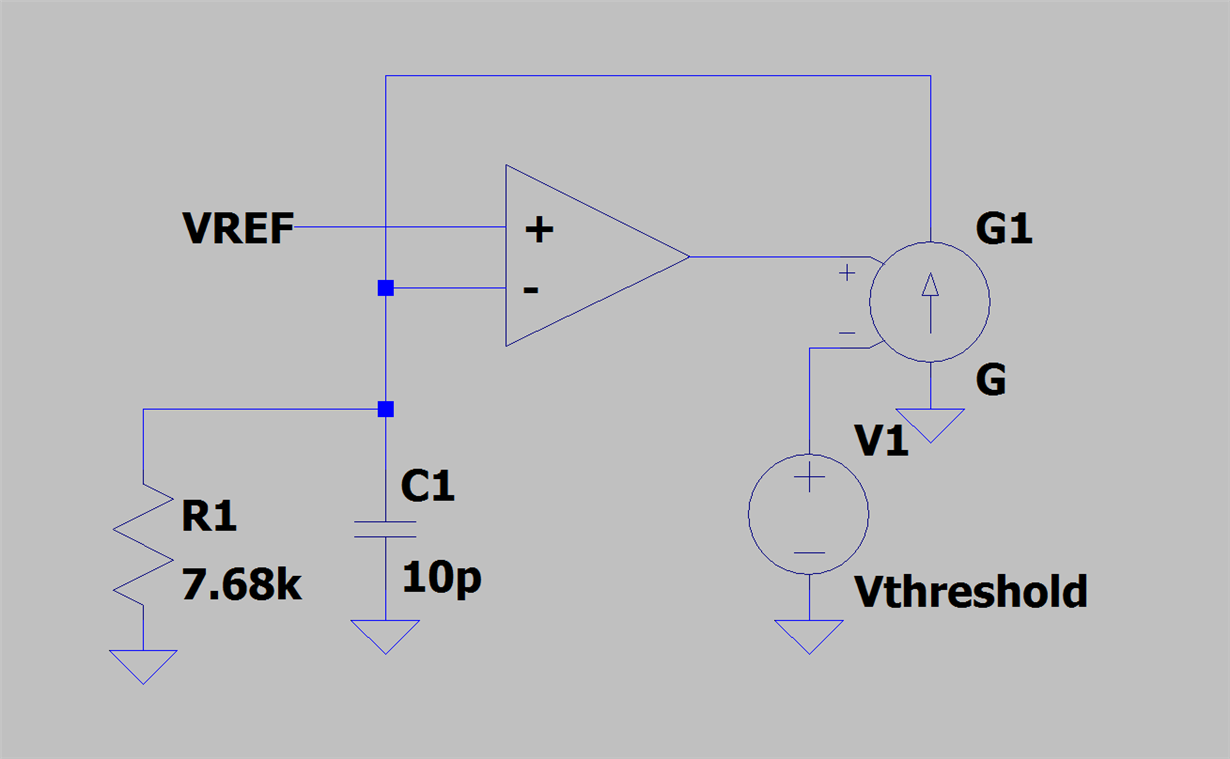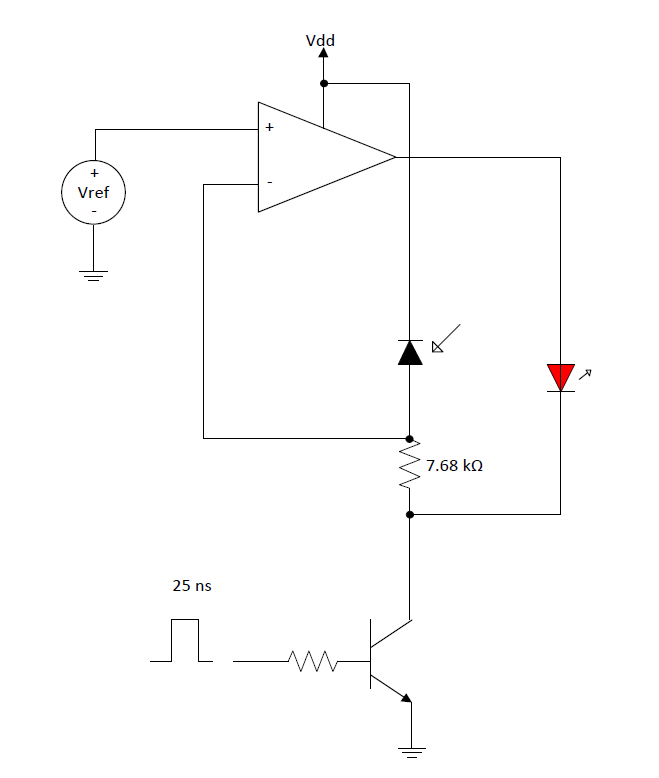I am working on a design that incorporates an OPA835 to control the current pumped into a semiconductor laser diode. The feedback of the control loop utilizes a Si photodiode that is part of the laser diode packaging (schematic below). When I breadboard this circuit and use a DC reference of 800 mV, the op amp output is oscillating (the oscillation is approximately 1 Vp-p at 6 MHz) when the laser is turned on (the laser appears to be operating correctly). Based on the open loop phase characteristics of this op amp I am wondering how this is happening and what may be done to reduce the instability. When I remove the photodiode from the circuit and replace it with a voltage equal to Vref, the control loop is very stable.
Parameters:
Vdd = 3.6 V
Vref = 800 mV
Laser Diode Forward Voltage Drop = 2.2 V
Laser Diode Current = 12 mA
Photodiode Capacitance = 10-20 pF
Closed Loop Gain = 2.75 (Vref = 0.8 V, Vout = 2.2 V)
-Andrew






